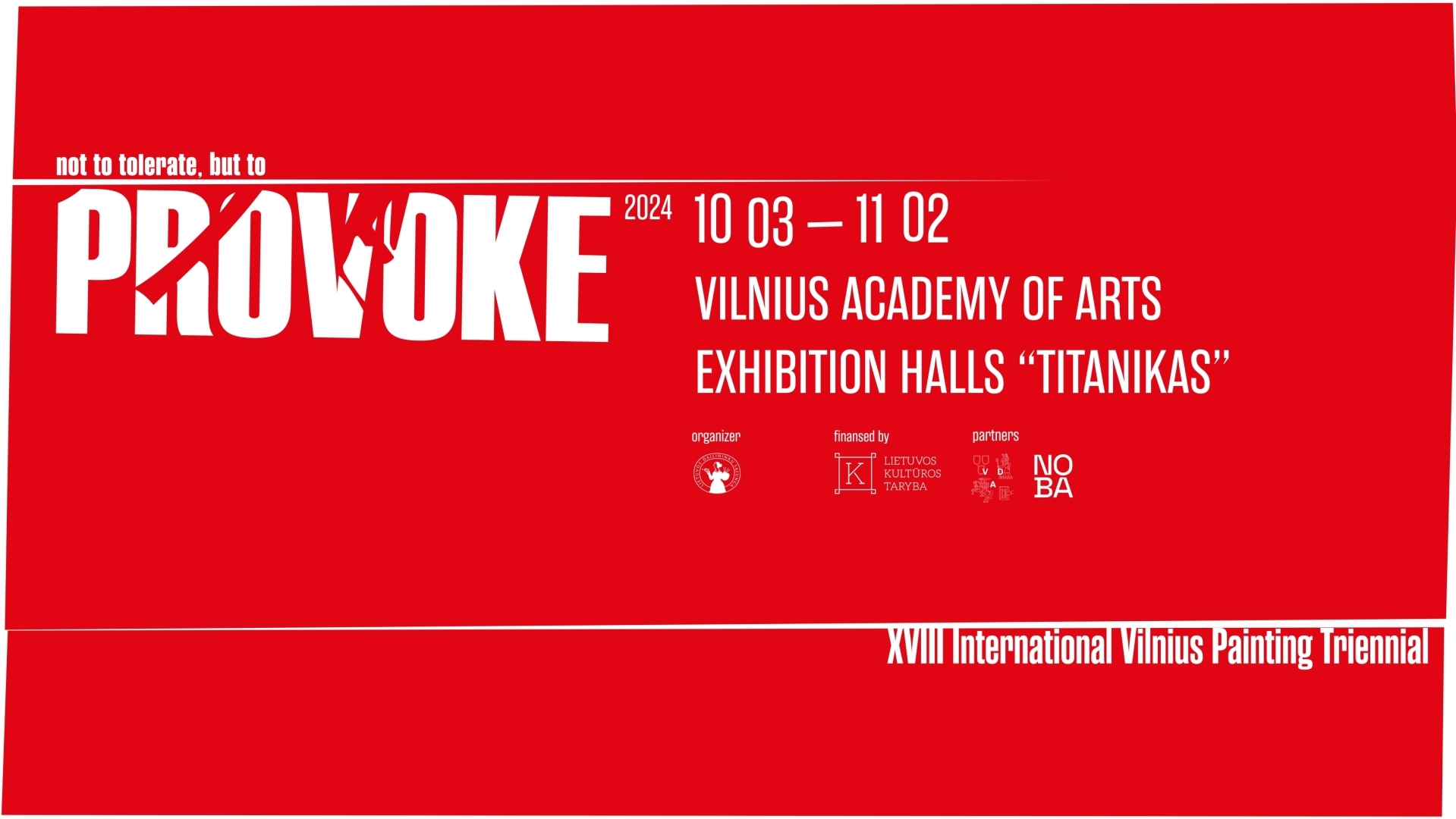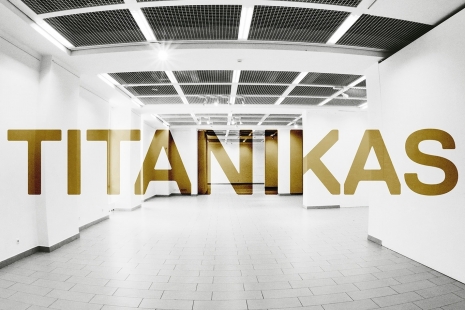Baltic Exposition at the VAA Exhibition Halls “Titanikas”
The exhibition space “Titanikas” features contemporary paintings from all three Baltic States. Here, the artists explore political, social, and human relationships with the environment, reflecting on the problems of contemporary society, the impact of technology on people and their creativity, the variety of painting expression. The restoration of independence has activated the Baltic art world, providing not only freedom of artistic expression, but also wider opportunities to study and exhibit art abroad.
Estonia’s older generation of artists, who are highly acclaimed in the art world, have a strong focus on political, social, sexual, ecological, and other themes. Kaido Ole sees art as a way station between the everyday and the ideal life. His work therefore reflects the motives of his personal life and his global aspirations. The artist invites the viewer to improve the world together by showing their own position and expectations. Another Estonian artist, Marko Mäetamm, explains his work similarly. For him, art means communication with the viewer, sharing what is important to him and how he sees the world. He seeks to provoke a dialogue and make people think outside their comfort zone and even beyond taboos. Only this artist’s creative expression differs from Kaido’s, whose paintings work through color and large formats. Marko does not use brushstrokes and works in small canvas formats. The works are more like design pieces, illustrations, and caricatures than paintings. This is what reflects the “modernity” of painting. Both artists have represented Estonia at the Venice Biennale.
A representative of the young generation of Estonian artists – Mirjam Hinn attempts to open up the world of human experience with her abstract color patches. According to the artist, the works reflect the complex experience of being human in modern society. The artist seeks to show the fragility of being human in a divisive society. Intense contrasts and sharp color tones are used. However, looking at the artist’s work, one feels freedom, lightness, and the pursuit of goodness and beauty. The works provoke thoughts with their sweetened colors in contrast to the environment of life.
Latvian artist Sigita Daugulė demonstrates abstract forms in the dynamics of postmodernism. She is considered a representative of chaos theory – a painter of abstract dramas of spots. The colors in her paintings are extracted through chemical combinations of dyes directly on the canvas. Varnishes and solutions are applied to the oil paints and affect them, changing the tones and textures. Both Estonian and Latvian artists have different ways of grasping the human condition – in one case through abstraction and color, through halftones, in the other, through some kind of alchemy. Both provoke the viewer, forcing him or her to look into the depth of the painting.
Latvian artist Maris Čačka has developed a unique hybrid method of abstract expression that combines painting and graphics. The process of creating such abstraction seems to be very meditative and harmonized, but the chaotic nature of the spots, the combinations of splashes betray an inner anxiety, a tingle… Maris admits that his works declare dialogues about the meaning of the world. It is therefore probable that the work, produced at a certain time, conveys the artist’s thoughts, subject to the world’s observation, reactions, and states of mind.
Mantas Valentukonis, a representative of the young generation of Lithuanian artists, develops individual painting expressions based on of digital images. He uses an increasingly popular painting technique that resembles airbrush paint, which spreads and breaks on the canvas, where it is covered by a template. A similar technique can be seen in the paintings of the above mentioned Hinn from Estonia. Mantas is always looking for new solutions, combining painting with other materials, gluing them to the frame, and continuing the work on the wall itself… The illusory artificiality of the image is intertwined with reality. Mantas seeks visual expression by experimenting with different media and technologies (image processing programs, computer games, CGI, photogrammetry or augmented reality).
Meanwhile, Andris Vitolins (Latvia) expands the boundaries of his painterly space into spatial objects. The painted geometric shapes are additionally illuminated with ultraviolet light to enhance the sense of human stress and crisis of ideas. He is concerned with what will happen to a society whose need for mental resources will be replaced by technology.
Vita Opolskytė, a Lithuanian painter representing the younger generation, reflects on human beings in a domestic but not simplistic way. Her interiors are full of elements and details that allow her to create multi-layered stories. It depicts a chaotic life full of problems and sensations. Her area of interest is the exploration of the relationship between reality and fiction through images of intimate personal and shared cultural life. Her works are based on psychology and emotion provoked by the painted image of one or another situation.
Opolskytė is juxtaposed with the Lithuanian painter of the older generation – Elena Balsiukaitė. They seem to work on eternal themes… Even time does not change that. The relationship of the inner world with the signs of the environment and the desire to decipher them. Balsiukaitė’s expression also happens through the links between the human being and the relation with the objects around him. She is fascinated by the semantics of sign compounds. Differences in approach do not negate commonality. In both cases, there is a strive to create a personal habitat of experience, which provocatively invites the viewer to go deeper into perception, and experience what it feels like to be in “someone else’s shoes”. Elena Balsiukaitė expands and deepens the themes, speaking about common human truths, about the sorrows of the world. Through painting, the artist demonstrates her social commitment – her attention to the problems of the young or the promotion of civic responsibility. She provokes the viewer by making jokes, transforming and deconstructing the world, and experimenting with forms of pictorial expression. In such a way, she brings to the surface what is the most important, what affects the viewer of her work.
Under the influence of time, art is becoming more and more co-cultural and cosmopolitan. Artists’ thinking is changing and pushing boundaries. But the criterion of identity remains. Therefore, it is always interesting to observe the differences between the artworks of neighboring countries in the triennial exhibitions – their themes, painting techniques, and contemporary artistic solutions.
Baltic artists participating in the Triennial:
Stasys Eidrigevičius (LT/PL), Elena Balsiukaitė (LT), Henrikas Čerapas (LT), Vita Opolskytė (LT), Mantas Valentukonis (LT), Jonas Gasiūnas (LT), Donata Minderytė (LT), Vygantas Paukštė (LT), Eglė Ulčickaitė (LT), Eglė Karpavičiūtė (LT), Mirjam Hinn (EE), Kaido Ole (EE), Marko Mäetamm (EE), Andris Vītolinš (LV), Māris Čačka (LV), Sigita Daugule (LV)





